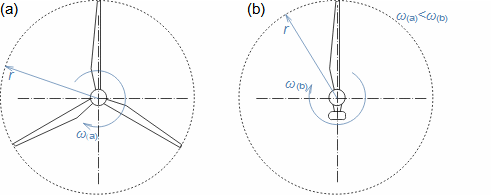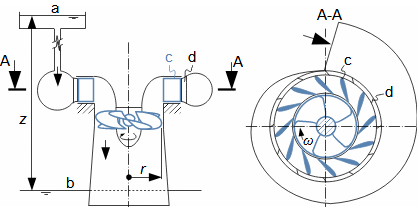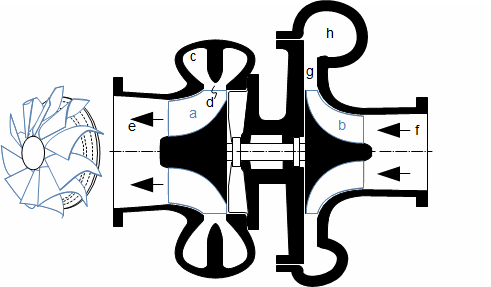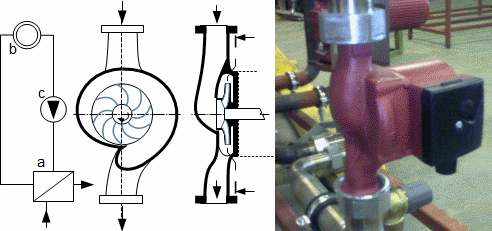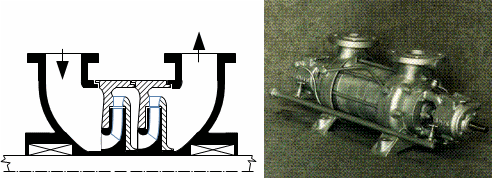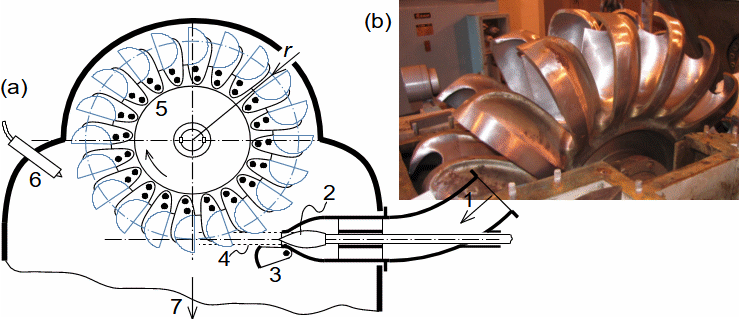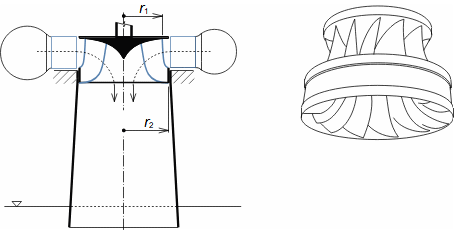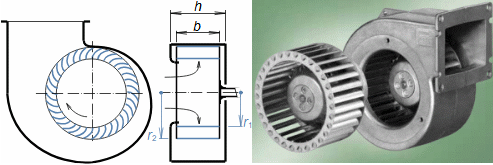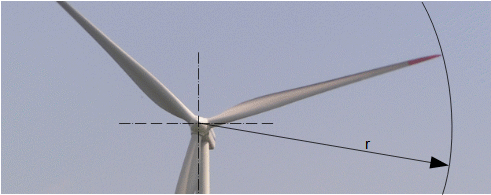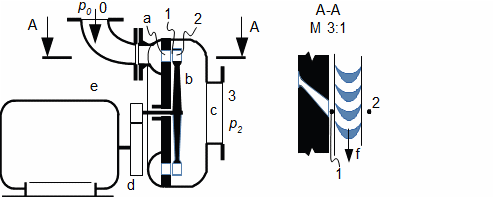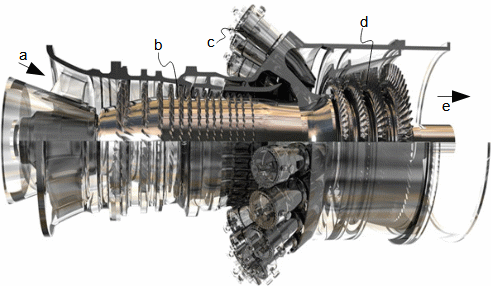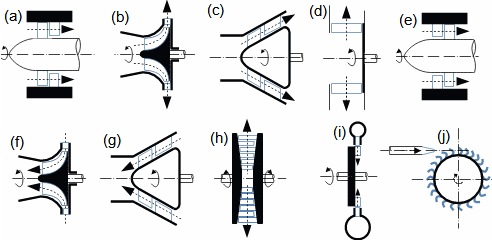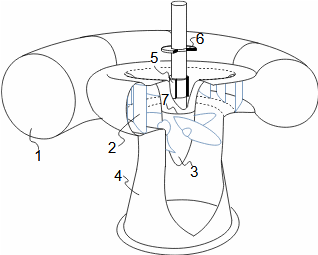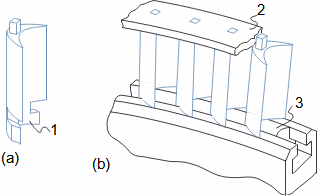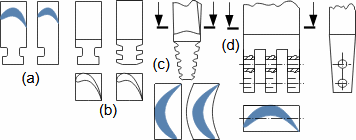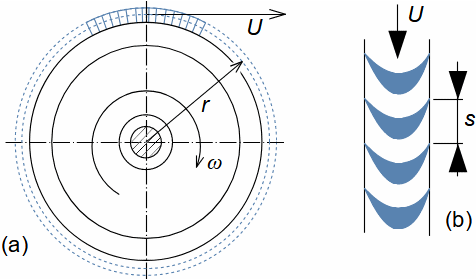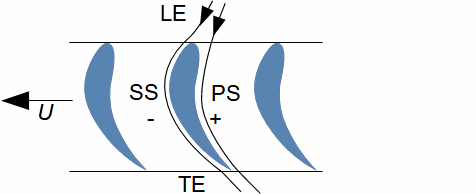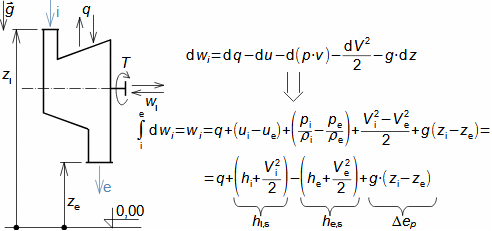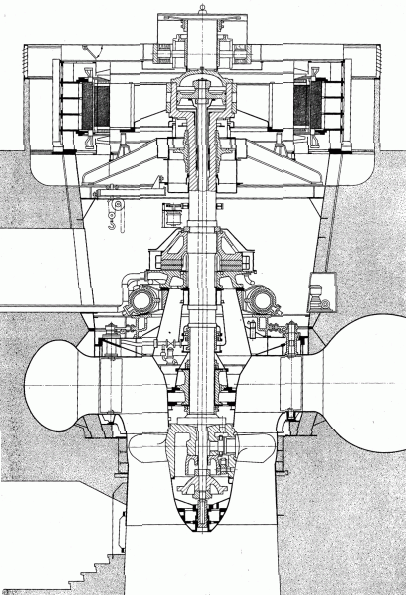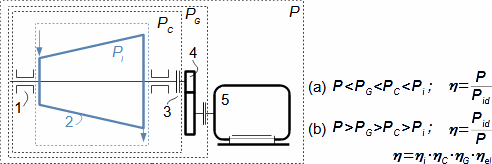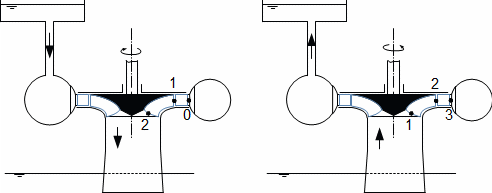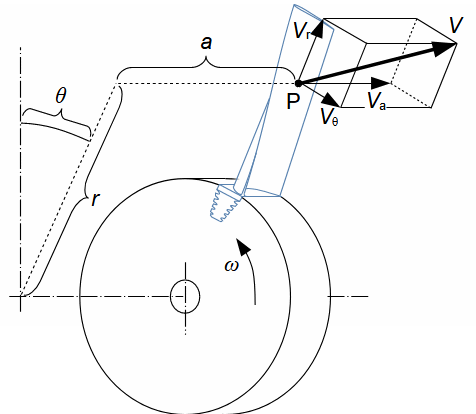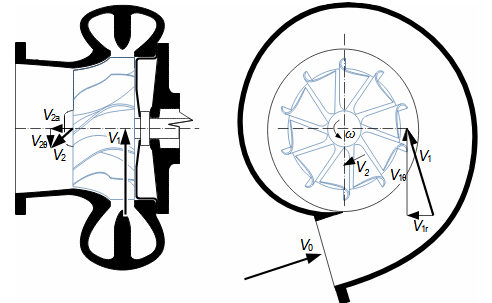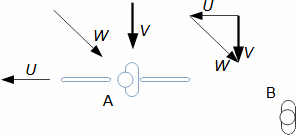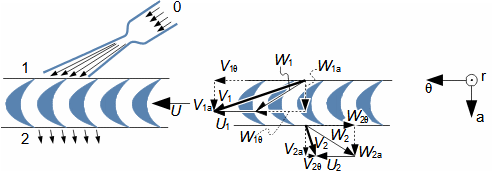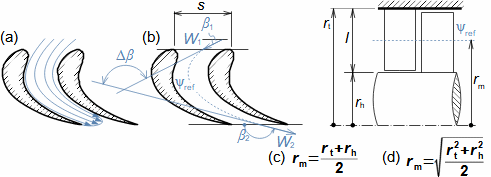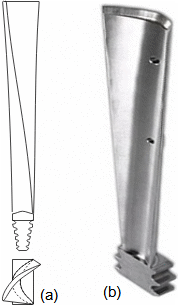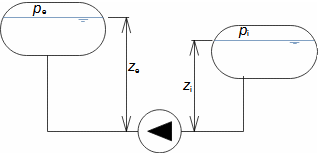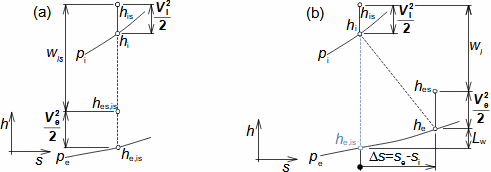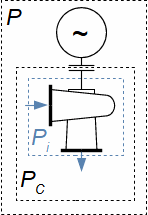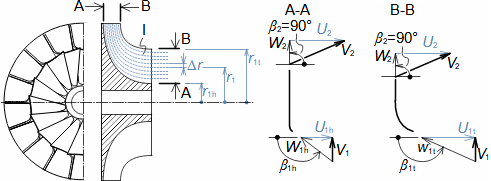Defining features of turbomachinesRotor (Impeller)BladeBlade passageKaplan turbineBlade machines are a wide group of machines (e.g. steam turbines, gas/combustion turbines, turbochargers, centrifugal/radial pumps, water turbines, etc.). Their characteristic feature is the rotor, which is a shaft with blades around its circumference (called an impeller). The blades form a so-called blade passage in which the working fluid flows - Figure 1 shows the impeller of a Kaplan water turbine, in which the blade passages are clearly visible. The energy transformation occurs due to the interaction of forces between the working fluid and the blades. 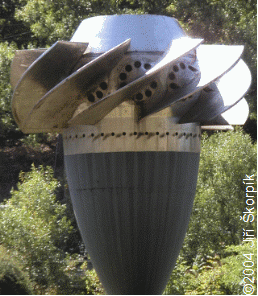 1: Kaplan turbine – rotor Blade passageWind turbineRotational speedThe blade passage principle also works for "sparse" rotors, or even with large blade spacing, as demonstrated by wind turbine rotors, see Figure 2. Even single-blade rotors can be constructed. In general, however, the smaller the number of blades, the higher the rotational speed for the same change of direction of velocity in the blade passage as a rotor with a larger number of blades but lower speed - only in this way can the flow over the entire rotor area be processed with the same efficiency. |
